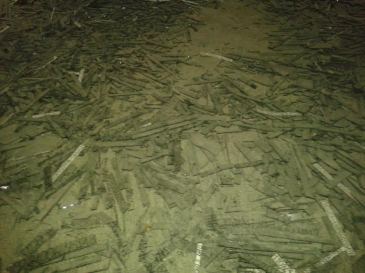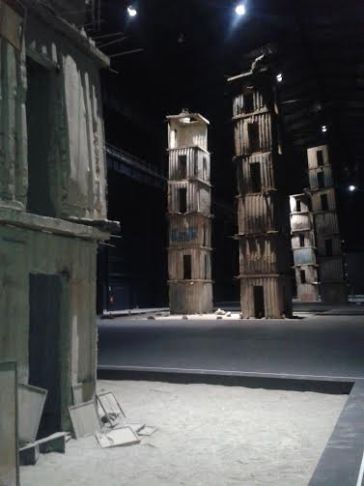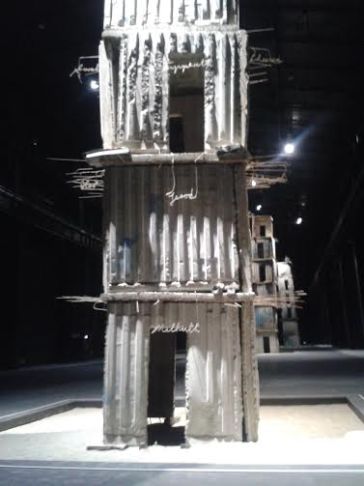A little while ago when I went to see the ‘bau bau‘ exhibition at Milan’s Hangar Bicocca, I also visited (once again) my favourite permanent exhibition there, I Sette Palazzi Celesti. The Seven Heavenly Palaces by Anselm Kiefer was a site specific installation created for the opening of the Hangar in 2004. The name of the installation comes from the ancient Hebrew treatise Sefer Hechaloth – the Book of Palaces/Sancturies.
Kiefer is one of the best known contemporary artists and his work pays reference to ‘German philosophy, Romantic symbolism, Germanic mythology, Judaic-Christian religiousness, alchemy as the ability to transform the world and the metaphor of art and its role in interpreting reality’.
The Seven Heavenly Palaces, made using reinforced concrete, each weighing 90 tonnes and varying between 14 and 18 metres in height are supposed to interpret the ancient religion of Judaism, while representing the ruins of the West following the Second World War and movement into the future, while asking us to consider the ‘ruins of our present’.
Each tower is themed and named individually:
1.) Sefiroth – representing the ten instruments of God in Hebrew mysticism of Kabbalah
2.) Melancholia – featuring glass and strips of paper at its base, which signify “falling stars”
3.) Ararat – this tower takes its name from the mountain where according to the Bible Noah’s Ark ran aground. It symbolises peace and salvation.
4.) Magnetic Field Lines – features a film of lead running down the tower – a material which repels light and therefore stops any image being created. In the exhibition guide it suggests this represents Kiefer’s own idea that each new piece of work cancels out the previous one.
5 & 6.) JH&WH – these letters join together in Hebrew phonetics to form the word Yahweh meaning God, but which Jews consider too holy to verbalize.
7.) Tower of the Falling Pictures – the name of this tower is quite literal, it features picture-less picture frames, some shattered on the ground.

Glass and Paper strips with numbers on which correspond to the classification of heavenly bodies used by NASA – at the foot of the Melancholia Tower
The reason I find this installation so fascinating, is the sheer size of it! When you stand in the Hangar amongst these giant, overwhelming towers, you feel very insignificant and small. It does as the artist intended, make you think about the ruins of the Second World War, but also stays relevant to our ‘ruins of the present’ as it could easily be the remains of a modern building in any of the war torn countries in our world. It certainly makes you reflect upon what you are seeing, and as the space is so immense, the sound in the Hangar as you walk around is quite eerie. Whilst there is no music, you can hear your footsteps and the whispers of other visitors reach you around the corners of the towers, but the way they are positioned, often restricts your view of the speakers. Whilst you wouldn’t immediately think that reinforced concrete would be the most aesthetically pleasing material, there really is beauty in the towers and they way they are lit and what they are supposed to represent. Definitely worth a visit!
Have you visited the exhibition or another by Kiefer? What did you think?
Anna
(All pictures are my own except for 1 and 6, for which I must thank my friend Anna! :))






A very interesting post. I am always learning something from your blog. Thank you.
LikeLike